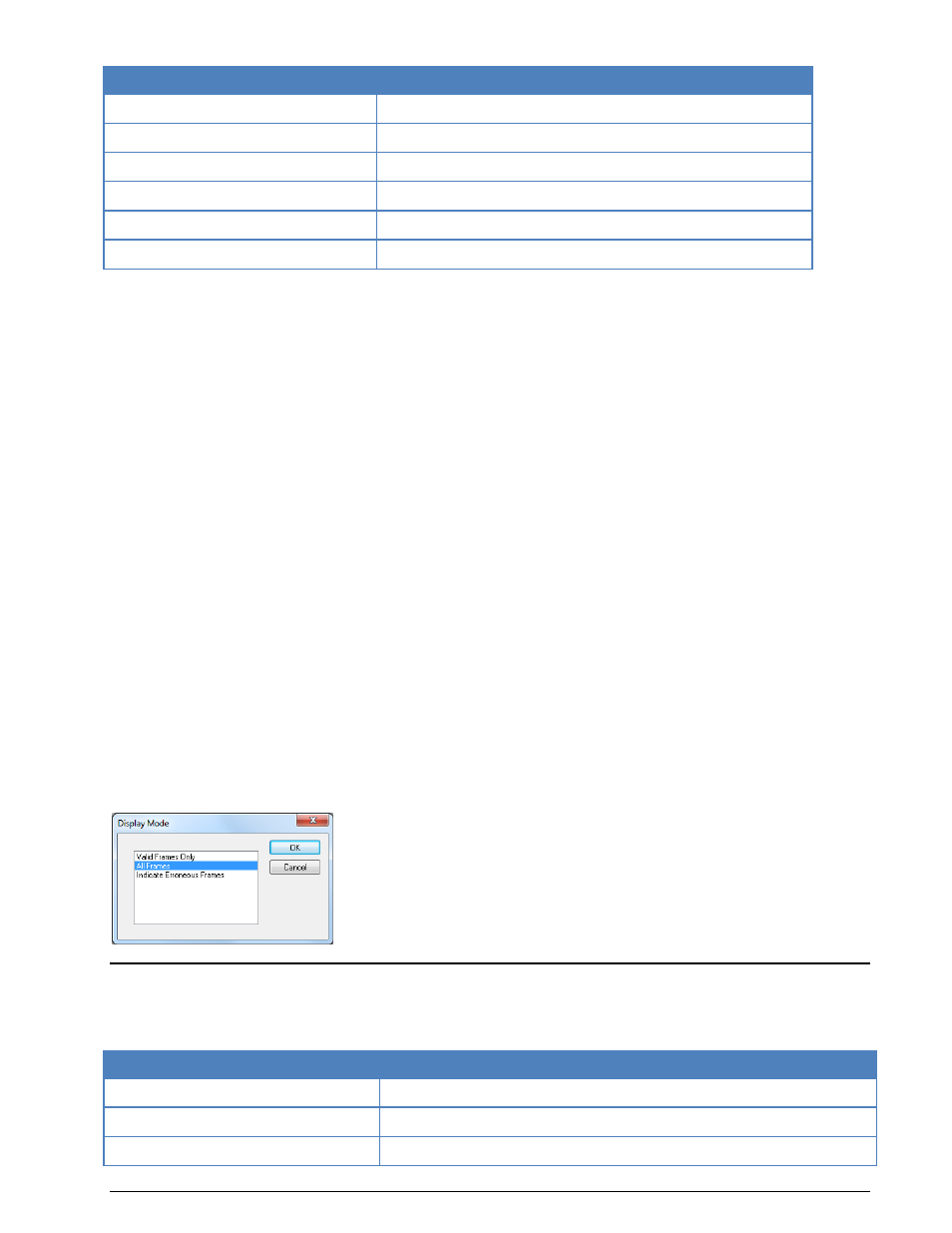Visel – Wavecom W61PC V7.5.0 User Manual
Page 246

236
Transmission Modes
WAVECOM Decoder W61PC/LAN Manual V7.5
Frequency range
VHF
Frquency range
VHF, 136.975 MHz (std. transmission frequency)
Operation modes
CSMA
Modulation
D8PSK
Symbol rate
31.5 kBd
Receiver settings
BW = 15-30 kHz
Input(s)
IF
VDL-M2 uses D8PSK (Differentially encoded 8-Phase Shift Keying) modulation scheme operating at a bit
rate of 31.5 kbps in a 25 kHz frequency band. The data is transmitted in the form of short bursts. The
maximum number of data bits at a single packet is 217 -1 bits, which corresponds to a packet length of
approximately 4 seconds.
Each packet carries a header field, which contains a 48 bits synchronization sequence and a packet length
field. The packet length field is protected with a (25, 20) block code, and the remaining data bits are pro-
tected with a systematic fixed-length Reed Solomon (255,249) 28-ary code.
Channel access is achieved using the carrier sense multiple access (CSMA) algorithm and the data link
service sublayer uses the aviation VHF link control (AVLC) protocol. AVLC is an extension of the HDLC
standard which is specified by the following ISO documents: ISO 3309, ISO 4335, ISO 7809, and ISO
8885.
The AVLC packets start and end with a special flag byte (0x7E) and include a 9 bytes long AVLC header af-
ter the start flag and 2 bytes long CRC field before the end flag. The header contains the 24-bit ICAO air-
craft/ground station addresses of the sending and receiving terminals and one byte link control field indi-
cating the type of the packet, e.g. INFO, Receive Ready (RR), Exchange Identity (XID), TEST, and Selec-
tive Reject (SREJ).
In HEX output mode, the whole AVLC packet is printed bytewise as hex.
In ITA5-US mode the AVLC frame types and 24-bit ICAO aircraft / ground station addresses are decoded
and printed. For INFO frames, the data field is decoded correspondingly if it is an ACARS packet, and is
printed in hex format (0xXX) if it is an ATN packet. For XID frames, the parameters IDs are mapped to
their names, and corresponding values are printed as hex. For other frame types, the whole data field is
printed as hex.
It is recommended to decrease the “Gain” manually until locating the bursts first visually in FFT Direct
view with a 48 kHz bandwidth. The polarity should be set also correctly according to the output polarity of
the receiver.
From Options | Display Mode, Valid Frames Only, All Frames or Indicate Errorneous Frames may be se-
lected.
VISEL
VISEL, also known as FEC-12 or YUG-MIL, is a synchronous system. This mode is used by defense forces
in Eastern Europe.
Parameter
Value
Frequency range
HF
Operation modes
Simplex
Modulation
FSK